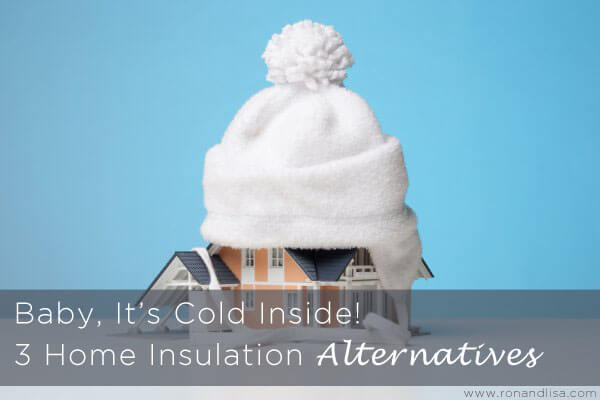I really can’t stay (Baby, it’s cold inside). I’ve got to go ‘way (Baby, it’s cold inside). Dean Martin and Nat King Cole may have thought it was cold outside, but for many, the chill that accompanies such a special time of year has worn out its welcome – inside. However, a simple modification to the home environment can change the indoor climate and provide comfort to one’s home.
Effectively insulating your home can reduce heat loss; leading to reduction of your heating bills while simultaneously keeping you warm. It is important to note that not all home insulation is the same and some materials found in common forms of insulation (i.e. fiberglass) can be detrimental to our health.
Many groups claim the health issues caused by fiberglass are just as bad as asbestos. The tiny sharp particles of fiberglass can break away into the air and embed in your skin, eyes, and lungs; creating small abrasions that cause irritation. Additionally, petroleum-based chemicals are commonly used in traditional fiberglass insulation product binders. In fact, Formaldehyde, a cancer-causing chemical, has been known to be released in potentially dangerous levels by fiberglass batting insulation. Unfortunately, more than 90% of homes in the United States are lined with fiberglass insulation today.
When possible, avoid using fiberglass insulation options for your home. Instead, opt for eco-friendly insulation. As the name suggests, eco-friendly insulation represents the usage of non-petroleum based products for insulation purposes. This means that it is environment friendly which can be beneficial to you and our society at large in several ways. Below are some suggestions on some primary eco-friendly insulation material options and their benefits to help you make the right selection for your home.
• Recycled Denim – This highly popular method of insulation has decent longevity as the material used is quite sustainable. The denim left over from the production of jeans in clothing factories is used as scrap material. The processed scrap is then treated with fire retardants; free from formaldehyde. The best part about recycled denim insulation is that it is free from toxins and carcinogens which are the biggest threats to health caused by petroleum based insulation products. Many toxins and carcinogens are known to cause health problems such as asthma, allergies and cancer. Though recycled denim is one of the highest priced and eco-friendly insulation materials available, it is well worth the investment due to the benefits it offers. Also, the manufacturing process does not involve complex methods like many of its counterparts. What’s more, the product is 100% recyclable which means, you are not only benefiting yourself, but also lowering your carbon footprint and helping society.
• Sheep Wool – A highly energy efficient eco-friendly insulation is sheep wool. Made of 100% pure wool, this insulation is one of the more effective materials in the marketplace today. As you may already be aware, wool is a wonderful material used in the making of winter clothes like jackets, sweaters, and so on. Similarly, sheep wool used in insulation also creates a protective layer; guarding the house from cold temperatures outside while keeping your home warm and cozy (and saying goodbye to cold inside). Unlike petroleum based product alternatives, wool will not cause itching of eyes and skin or allergies. It is also easier to install sheep wool insulation. It does not require any advanced techniques or machinery and can be used on different shapes and sizes. Sheep wool insulation works well with concrete and wooden walls and floors alike.
• Icynene – has gained popularity over the years due to the many benefits it offers. It is commonly referred to as spray foam insulation. Similar to sheep wool and recycled denim, this too, is an eco-friendly insulation method. Air leakages as seen in other forms of insulation are reduced or absent in this method earning Icynene extra bragging rights. Apart from insulation, the spray foam is also beneficial for noise insulation and, simultaneously, prevents growth of mold on the walls.
|
Utilizing eco-friendly insulation can even increase property value and can provide great financial investment. Overall, eco-friendly insulation is not only beneficial for us from a financial perspective, but also from its impact on the environment and the health the occupants in our homes. For more information on eco-friendly insulation options and hundreds of healthy home tips, pick up a copy of our book, Just Green It! (Running Press, 2010).




Wow – it sure is cold outside and inside too! What crazy freezing weather for most of the country – lucky you in southern CA today! I’d love to get your ideas on “keep the winter cold, hot summer air, and noise out” treatments for huge windows and sliding glass doors. I’d like to use healthy and environmentally friendly products. And most of all something that is clear or translucent so I can keep enjoying the views that come with all the glass. Some people suggest another set of double paned doors and windows inside the ones I have (super expensive), fiberglass sheets that can be taken on and off (fiberglass is lightweight but unhealthy right?), a new Swiss acoustic sheer curtain (alas it has flame retardants) …would love your suggestions! We may need inventors :)))